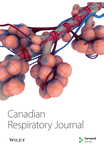Self-Expandable Metallic Stents in Nonmalignant Large Airway Disease
Abstract
Airway self-expandable metallic stents (SEMS) were initially studied in malignant airway obstruction; however, their use in benign airway diseases has become progressively more frequent. This may be explained by their ease of insertion compared with silicone stents, which require rigid bronchoscopy for insertion. While initial experience with SEMS in benign disease suggested efficacy and promising short-term safety profile, long-term follow-up revealed significant complication rates. In addition to a high complication rate, the management of these complications is made more difficult by the semipermanent nature of these devices. Reported complications include infection, granulation tissue formation, stent migration, stent fracture, airway perforation and fistula formation, as well as extension of the initial injury, potentially eliminating other therapeutic options such as surgical resection. Therefore, SEMS should only be used in nonmalignant large airway disease as a last resort for patients in whom other endoscopic methods, including silicone stents and dilations, as well as surgical options have failed or are technically not feasible.




